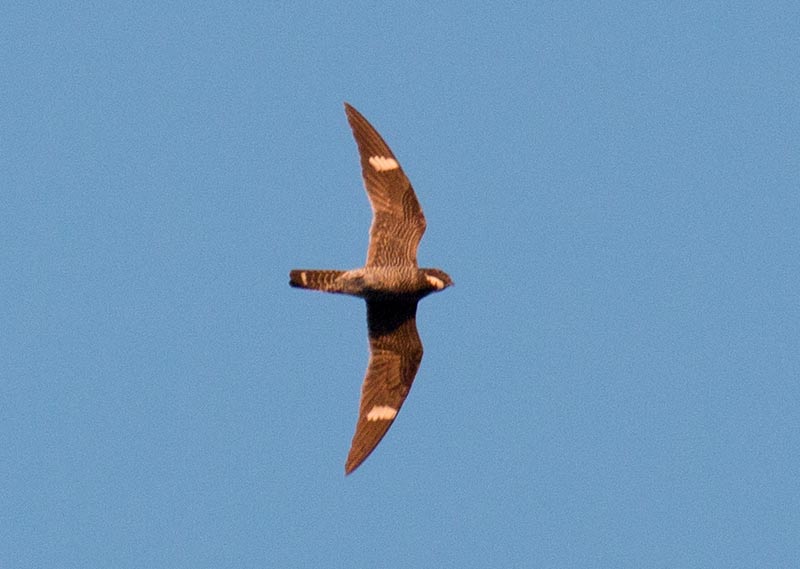Common Nighthawk
9/4/16
By David Brown
If you have been outside at dusk during the past few weeks and looked up you may have seen a large bird flying like a drunken bat. This is the common nighthawk (Chordeiles minor). Despite the name, it is not a hawk but rather a member of the nightjar family, also known as goatsuckers based on an old myth. The eastern whip-poor-will is our only other local bird in the same family. The common nighthawk is crepuscular, meaning that it is active at dusk and dawn, rather than at night.

Common Nighthawk
The ones we are seeing now are migrating to their wintering grounds in South America. On August 21st over 150 were seen migrating over the river in Williamsport following a cold front.
Common nighthawks are brown with distinctive white bars on the wings. They have a nearly two-foot wingspan and the wings are long and pointed. Don't confuse nighthawks with chimney swifts which are much smaller and gather in groups of hundreds at dusk near chimneys.
Common nighthawks are insectivores and hunt on the wing. They are occasionally seen flying low but are more often seen high overhead. They are sometimes seen catching insects around stadium lights. During the day nighthawks often perch in trees but are difficult to see because their coloration provides camouflage. Nighthawks vocalize during the breeding season with a “peent” call that is similar to that of the American woodcock and males produce a loud booming at the bottom of their courtship dive.
Nighthawks lay eggs directly on gravel surfaces. In Pennsylvania they will nest on gravel rooftops in urban areas but also less commonly on the ground at former surface mines.
The common nighthawk population in Pennsylvania and surrounding states is in a steep decline. One possible reason is loss of nesting habitat due to changes in flat rooftop design from gravel to rubberized materials. Pesticide use that decreases the number of insects and nest predation from increasing crow populations are other possible explanations for the decline.
Migrating common nighthawks will continue through the area until the end of September so if you are outside at dusk or dawn watch the sky for this fascinating species as it flies thousands of miles to South America.